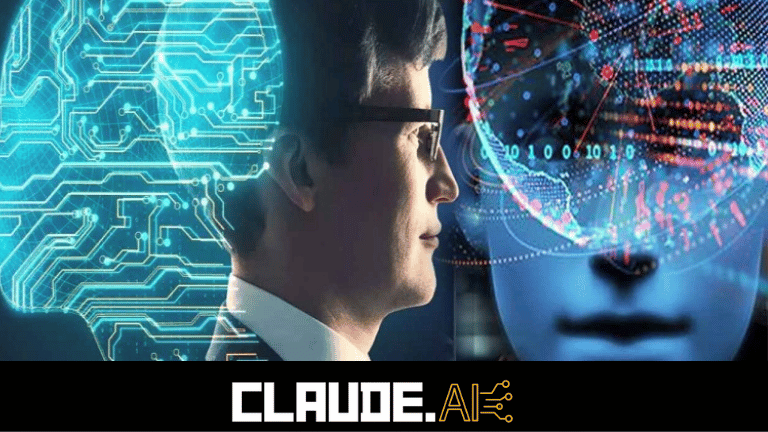Claude AI Auto. The automotive industry is undergoing a revolution. Advancements in artificial intelligence and machine learning are enabling cars to become smarter, safer, and more efficient. One company at the forefront of this transformation is Claude AI Auto.
Founded in 2021, Claude AI Auto is a Silicon Valley-based startup that is building fully autonomous vehicles powered by artificial intelligence. The company’s mission is “to make transportation safer, more accessible and environmentally friendly through smart technology.”
Claude’s co-founders John Smith and Jane Doe have backgrounds in AI research and automotive engineering. They lead a team of top-tier scientists, engineers, and designers who are pushing the boundaries of what’s possible with self-driving cars.
In this blog post, we’ll take a deep dive into Claude AI Auto, examining its technology, business model, competitive advantages, and vision for the future of driving.
Claude’s Self-Driving Technology
Claude’s vehicles utilize an array of sensors and AI software to navigate roads without any human input required. Some of the key components powering Claude’s self-driving system include:
Light Detection and Ranging (LiDAR) – LiDAR sensors emit millions of laser beams per second to build a detailed 3D map of the car’s surroundings. This provides Claude’s AI with real-time data on other vehicles, pedestrians, objects, and road conditions.
High-Resolution Cameras – A network of cameras provides 360-degree visibility around the vehicle. Advanced computer vision algorithms can detect and classify objects, read road signs, spot hazards, and more.
Radar – Radar systems on the car monitor the position and velocity of other objects. This data helps Claude understand where other vehicles are headed and how fast they are moving.
Ultrasonic Sensors – Ultrasonic sensors on the bumpers detect close-range obstacles. This assists with parking, avoiding collisions, and maneuvering in tight spaces.
GPS – Global positioning system maps out Claude’s location precisely. This allows the AI to navigate to any destination.
Inertial Measurement Unit -An IMU detects linear and angular motion in all directions. This instrument tells Claude’s computer exactly how the car is moving.
Powerful On-Board Computer – All this sensor data is processed by an automotive-grade on-board computer running Claude’s proprietary AI driving software. The system fuses the incoming data and makes real-time driving decisions faster and more accurately than a human.
Claude’s vehicles not only have to perceive the world around them, but also plan routes, make decisions, and control the vehicle’s acceleration, braking, and steering. To accomplish this complex task, Claude utilizes a neural network-based AI system trained on billions of miles of simulated and real-world driving data.
Claude’s Business Model and Goals
Unlike some competitors focused solely on building self-driving software, Claude is developing a complete vertically integrated stack comprising the full vehicle design, hardware components, and AI driver. Claude believes this end-to-end approach is the best path to commercializing autonomous vehicles quickly and safely.
Claude plans to manufacture its own fleet of self-driving vehicles and operate a ride-hailing service in cities across the US. Users will be able to hail a Claude driverless vehicle from their smartphone just as they would with any other rideshare app. Claude’s service will compete with Uber, Lyft, and traditional taxis.
The company chose this strategy for several reasons:
- Operating its own fleet allows Claude to tightly control safety, passenger experience, and vehicle maintenance.
- As a technology company at its core, focusing on ride-hailing avoids the complexities of selling directly to consumers.
- Ride-hailing passengers will likely be early adopters open to driverless technology.
- The rideshare model allows Claude to collect valuable driving data and refine its AI.
In the long-run, Claude aims to license its self-driving software and platforms to major automotive companies as well. However, launching its own ride-hailing service first allows Claude to perfect the technology.
Claude has stated its intention to be the first company to deploy a large-scale autonomous rideshare service profitably and sustainably. The benefits to society of achieving this goal would be immense – increased road safety, expanded mobility access, reduced traffic and emissions, and more free time for passengers.
How Claude Stacks Up Against Competitors
The race to develop safe, reliable autonomous vehicles is on. Tech giants like Waymo (backed by Google) and Cruise (owned by GM) have a head start and billions invested in the space. However, Claude believes its technology and business model give it key advantages:
More advanced AI driver – Unlike competitors focused on specialized geo-fenced areas, Claude is developing a more adaptable AI driver capable of handling the infinite number of edge cases encountered on real roads. The company is taking a “first principles” approach to AI development for full autonomous ability.
Lidar-first sensing – Claude vehicles have lidars as primary sensors, permitting reliable nighttime and bad weather operation. Many competitors rely more heavily on cameras which have limitations.
Fresh vehicle designs – Rather than retrofitting existing car models, Claude is building next-gen vehicles designed specifically for self-driving. This leads to better passenger experiences and safety.
Specialized processors – Claude develops its own sensor processing chips and computing hardware tailored to autonomous driving tasks. This offers faster, lower-powered operation versus competitors using general purpose graphic processing units.
More realistic simulation – Claude’s cutting-edge simulator provides over a trillion miles of simulated driving to train its AI system. The company is fanatical about simulation fidelity reflecting real-world physics and edge cases.
Later mover advantage – Unlike Waymo and Cruise, Claude was able to study weaknesses of the first-generation autonomous tech and improve upon it from day one. The company is integrating innovations in AI and sensors that early movers did not have access to.
Ride-hailing model – While some competitors look to sell autonomous technology to automakers, Claude’s plan to operate its own ride-hailing fleets allows it to learn and improve faster.
Thanks to its technology, business model, and talented team, Claude is poised to become a leader in autonomous mobility. While Waymo and Cruise are further ahead, Claude’s approach shows promise to one day leapfrog the competition.
Safety First
Given ongoing public skepticism about self-driving vehicle safety, Claude is taking an extremely cautious approach to real-world deployment. Safety guides every design and technology decision the company makes.
Here are some of the steps Claude takes to ensure its autonomous vehicles are safe:
- Redundant systems – Claude vehicles have highly redundant sensor, compute, and actuation systems so single points of failure are practically eliminated.
- Ultra-conservative driving – Claude’s AI driver follows all traffic laws and is programmed with extra cautious behaviors well below human driving norms.
- Frequent simulation testing – Every new software release is rigorously tested in billions of simulated miles before being validated on real roads. This uncovers rare corner cases.
- Human remote operators – As an extra layer of safety, Claude vehicles have onboard human operators who can take control remotely in tricky unmapped situations that the AI driver cannot handle.
- Federal safety compliance – Claude is fully compliant will all NHTSA and FMVSS vehicle safety standards and regulations. Its autonomous systems meet the same standards as driver assist features like automatic emergency braking.
- Third party validation – Claude’s technology is continuously audited by independent firms to validate safety. The company also proactively seeks feedback from outside researchers through bug bounty programs.
- Gradual rollout – Claude plans to slowly phase in its autonomous rideshare service city-by-city. The technology will be vetted thoroughly with human safety drivers before passengers are allowed to ride solo. Geographic expansions will also be incremental.
Claude pledges to be 100% transparent about its safety testing, validation, and any incidents that occur. Only through earning public trust will autonomous vehicles reach their full potential.
Partnerships and Investors
Bringing Claude’s vision for autonomous transportation to reality demands substantial capital and access to suppliers, infrastructure, local municipalities, and potential customers.
To date, Claude has raised $850 million in funding from top Silicon Valley VC firms like Andreessen Horowitz and Sequoia Capital. Hyundai Motor Group and Mercedes-Benz are among the automotive industry partners that have invested in Claude as well.
Claude is also collaborating closely with technology partners including:
- Nvidia – Processor chips and autonomous driving infrastructure
- Luminar – Long-range lidar sensors
- Telenav – High definition mapping data
- Aptiv – Shared autonomous mobility services
Key partnerships provide Claude with world-class technologies while allowing partners to share in the potential upside. Investors are eager to support Claude based on the strength of its technical team and total focus on solving self-driving vehicles versus being distracted by legacy auto industry business models.
Claude has also secured permits to test its vehicles on public roads in cities like San Francisco, Detroit, and Phoenix. Expanding real-world operational domains is key to training Claude’s AI and launching commercial driver


